TRIGYNUS (Burchell) von Poellnitz, 1938 (engl./ fr.)
Synonyms:
Cotyledon trigyna Burchell (1824)
Cotyledon rhombifolia var. spathulata N.E.Brown ex Marloth (1925)
Adromischus rupicola C.A.Smith (1939)
Section Boreali
Distribution : SA (Northern Cape, Free State); Nama Karoo.
Description ( according to E. van Jaarsveld in IHSP, 2003) :
Dwarf, compact, to 4.5 cm tall and 12 cm in diameter.
Roots fibrous.
Branches decumbent, short, basally tuberous to 3 cm in diameter and more, grey-green, younger leave-bearing branches to 6 mm in diameter.
Leaves compactly arranged, ascending, obovate, oblanceolate, rarely orbicular, 1.5 - 3 x 1.5 - 2.9 cm, grey-green, mottled and often with a maroon purplish marginal tinge, upper face flat to concave during winter, lower face convex, margin acute, grey-white, horny for ± upper 2/3, base cuneate, apex rounded to obtuse.
Inflorescence to 35 cm with 1- to 2-flowered subsessile cymes, buds erect, 5-angled, gradually tapering, pedicels 2 - 6 mm.
Flowers : Sepals to 3 mm, corolla 10 - 13 x 2 mm, tubular, longitudinally grooved, tube yellowish-green at base, covered with powdery bloom, petals ovate, to 2.5 mm, white or tinged pink, acute, throat hairless, anthers shortly exserted.
Flowering time : Mid-summer
Note :
Because of the mottled leaves this species very often is labelled A. maculatus. While A. trigynus belongs in Section Boreali, A. maculatus is in Section Incisilobati, what means that the flowers of the two species are clearly different.
------------------------------------------------------------------------------------------------------
Synonymes :
Cotyledon trigyna Burchell (1824)
Cotyledon rhombifolia var. spathulata N.E.Brown ex Marloth (1925)
Adromischus rupicola C.A.Smith (1939)
Section Boreali
Distribution : Afrique du Sud (Cap-Nord, Etat-Libre) ; Karoo semi-désertique.
Description (selon E. van Jaarsveld dans IHSP, 2003) :
Plante naine et compacte, De 4,5 cm de haut et 12 cm de diamètre.
Racines fibreuses.
Branches inclinées, courtes, tuberculées à la base, de 3 cm de diamètre ou plus, gris-vert, les plus jeunes branches feuillues ayant un diamètre de 6 mm.
Feuilles arrangées de façon compacte, ascendantes, ovales, oblancéolées, rarement orbiculaires, 1,5 - 3 x 1,5 - 2,9 cm, gris-vert, tachetées et souvent avec une marge teintée de marron pourpre, face supérieure plate à concave durant l'hiver, face inférieure convexe, marge aiguë, rigide sur les 2/3 supérieurs, apex arrondi-obtus.
Inflorescence jusqu'à 35 cm portant plusieurs cymes d'une à deux fleurs presque sessiles, boutons érigés, pentagonaux, s'effilant progressivement, pédicelles 2 - 6 mm.
Fleurs : sépales jusqu'à 3 mm, corolle 10 - 13 x 2 mm, tubulaire, longitudinalement cannelée, tube vert jaunâtre à la base, couvert de pruine, pétales ovales de 2,5 mm, blancs ou teintés de rose, pointus, gorge sans poils, anthères dépassant brièvement.
Période de floraison : milieu d'été.
Note :
A cause de ses feuilles tachetées, cette espèce est très souvent étiquetée A. maculatus.
A. trigynus appartient à la section Boreali, tandis qu'A. maculatus est dans la section Incisilobati, ce qui signifie que les fleurs des deux espèces sont clairement différentes.
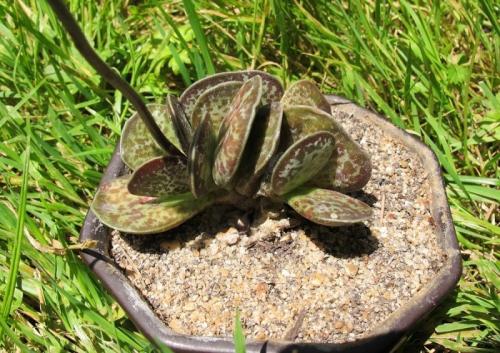
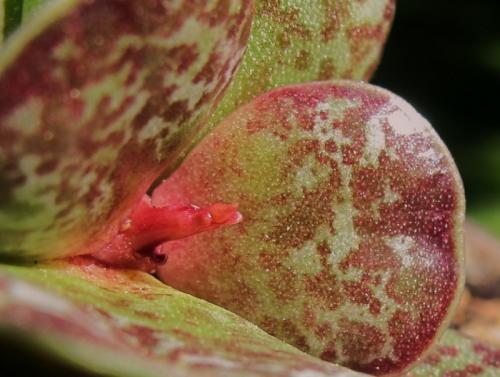
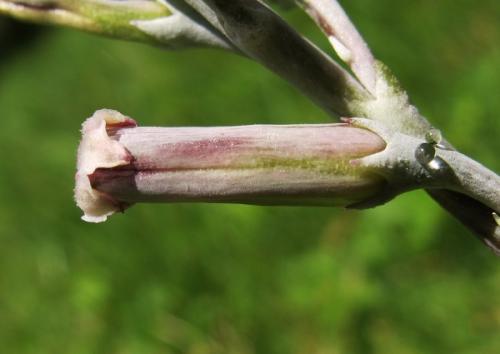
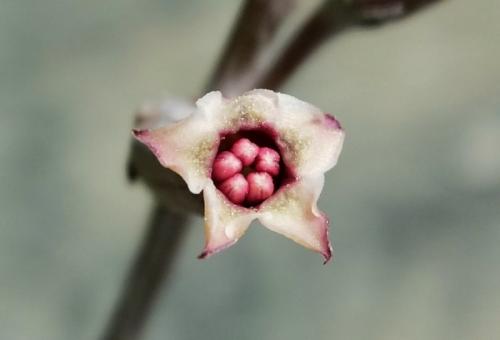
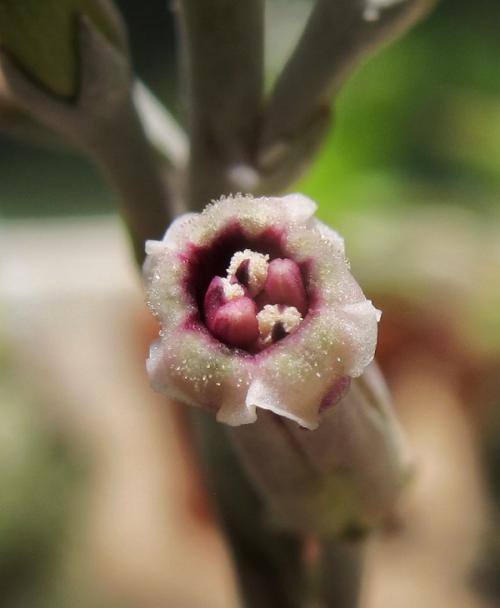
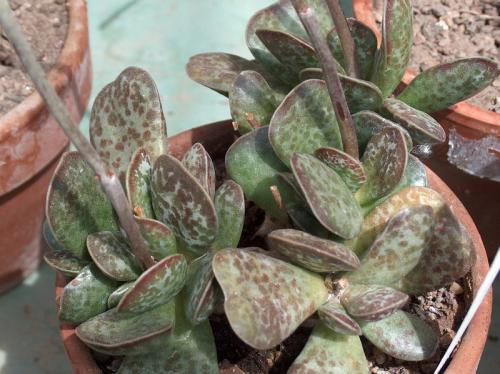
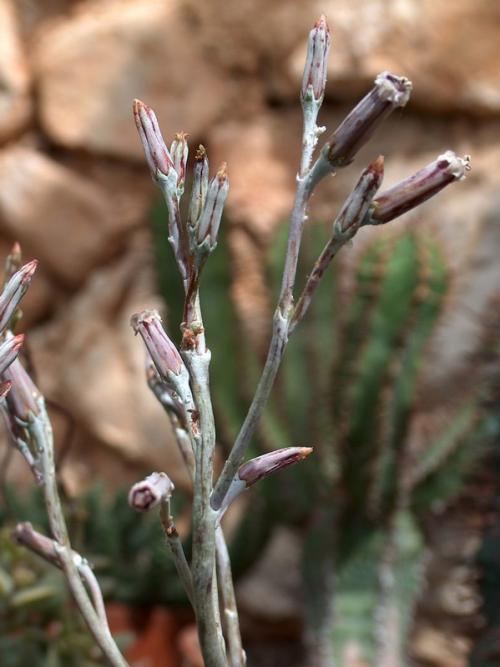
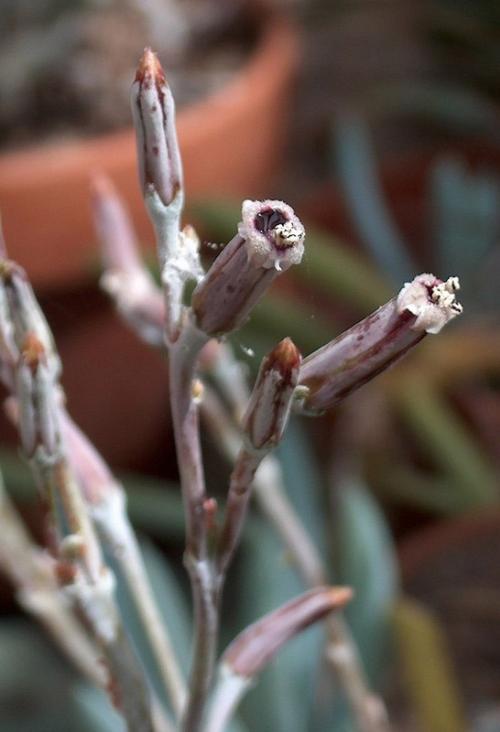
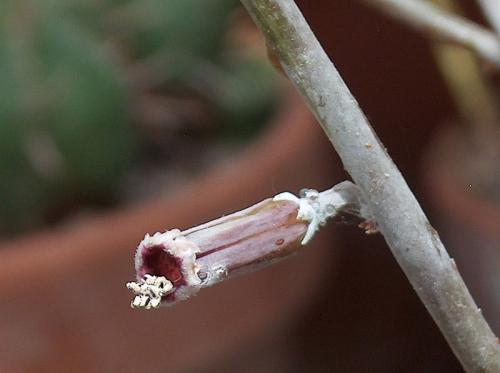
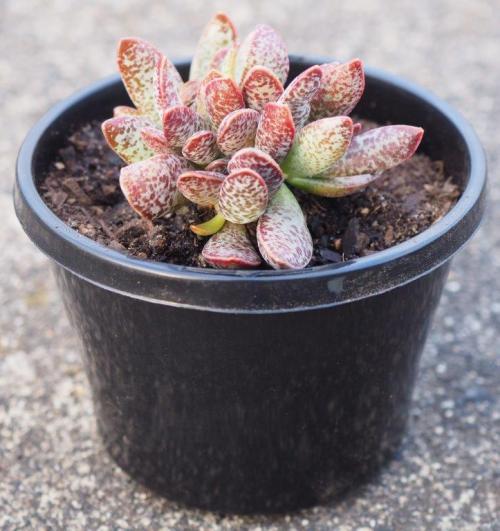
Photo Santino Rischitelli
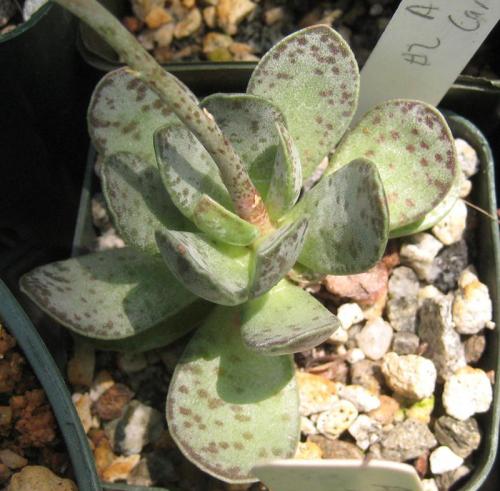
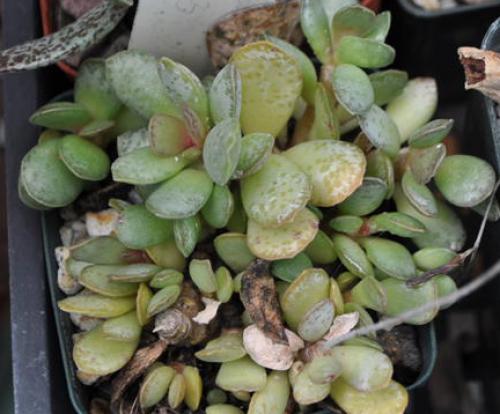
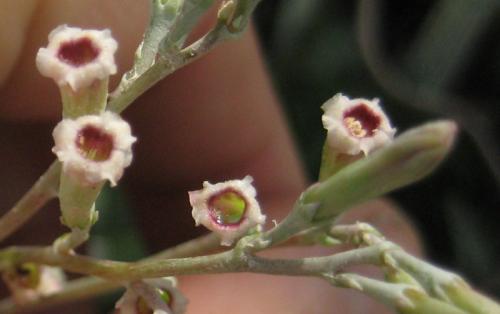
Photo Michael Wisnev
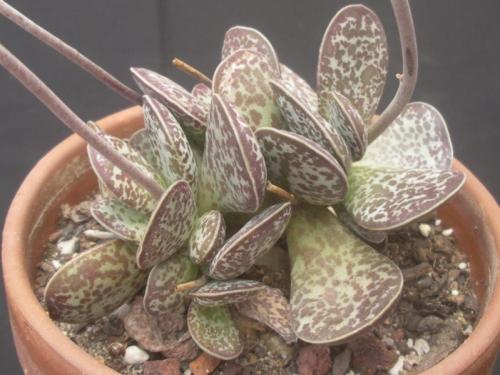
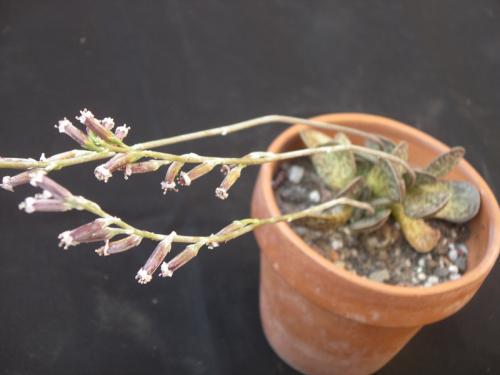
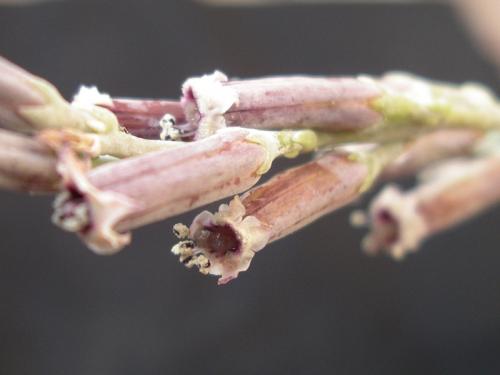
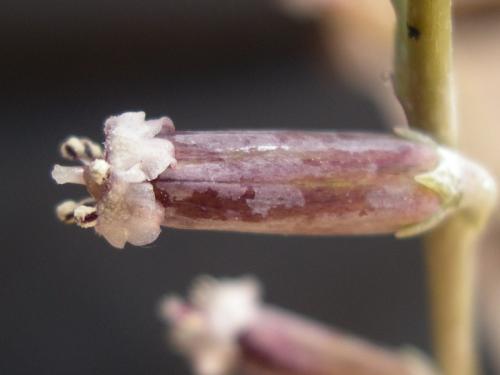
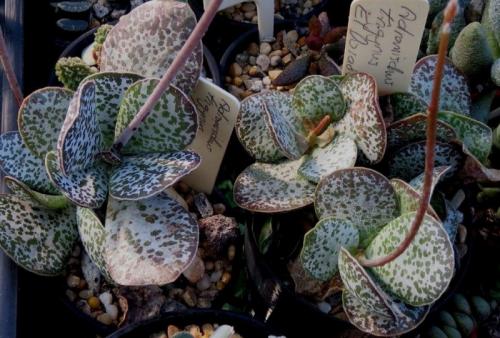
Photo Noelene Tomlinson
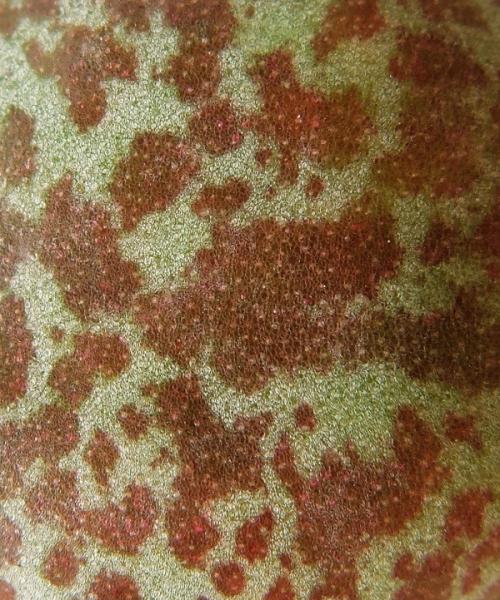
Photo Thomas Delange